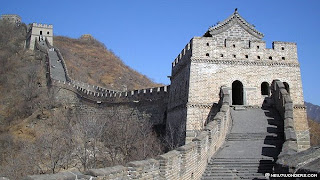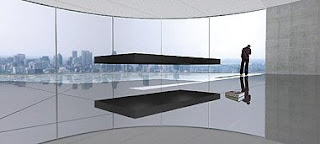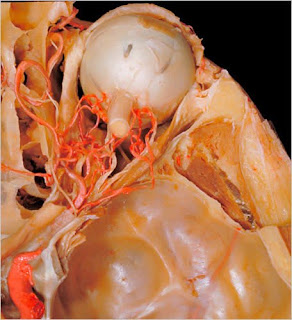Pakistan Rupee Calculator
Monday, February 23, 2009
Sunday, February 22, 2009
wonders

New Seven Wonders Of The World.
The Great Wall of China (220 B.C and 1368 - 1644 A.D.) ChinaCHINA
The Great Wall of China was built to link existing fortifications into a united defense system and better keep invading Mongol tribes out of China. It is the largest man-made monument ever to have been built and it is disputed that it is the only one visible from space. Many thousands of people must have given their lives to build this colossal construction.The Taj Mahal (1630 A.D.) Agra, India
INDIA
The Roman Colosseum (70 - 82 A.D.) Rome, Italy
ITALY
Christ Redeemer (1931) Rio de Janeiro, Brazil
BRAZIL
Petra (9 B.C. - 40 A.D.), Jordan
JORDAN
The Pyramid at Chichén Itzá (before 800 A.D.) Yucatan Peninsula, Mexico
MEXICO
Machu Picchu (1460-1470), Peru
PERU
Fashion


Most Expensive Cell Phones in the World!!!
1.The Diamond Crypto Smartphone
Price: $1.3 MillionDesigned by diamond encruster extraordinaire Peter Aloisson The Diamond Crypto Smartphone is sometimes quoted as the World’s most expensive cell phone (depending on exchange rates). Russian firm JSC Ancort has developed a Windows CE-based smartphone ready for Aloisson’s bejeweling that employs “powerful encryption technology” to “provide secure protection of information against kidnapping, technological blackmail, financial racketeers and corrupted state officials” — sounds like marketing speak for a password-protected wallet app. Of course, with its $1.3 million price tag and 50 diamonds (10 of which are blue) you might start to have more trouble with mugging than with technological blackmail.
2. Bucheron for Vertu Cobra
Price: $310,000
 Parisian jeweler House of Bucheron linked up with Nokia subsidiary Vertu on this limited-edition series of eight cobra phones, which include a two-carat pear-cut diamond, a one-carat round diamond, two emerald eyes and 439 rubies totaling 21 carats. Vertu phones also link up to a special concierge service with information about travel, entertainment, restaurants and events. Other Vertu phones sell between $4,350 and $81,000.
Parisian jeweler House of Bucheron linked up with Nokia subsidiary Vertu on this limited-edition series of eight cobra phones, which include a two-carat pear-cut diamond, a one-carat round diamond, two emerald eyes and 439 rubies totaling 21 carats. Vertu phones also link up to a special concierge service with information about travel, entertainment, restaurants and events. Other Vertu phones sell between $4,350 and $81,000.3. The GoldVish Le Million
Price: $1.45 Million
Friday, February 20, 2009
Announcements !!

Cool inventions
Time’s Best Inventions 2006 has some neat stuff:
Janjaap Ruijssenaars air mattress uses a matching set of repelling magnets, built into the bed and the floor below, to support ~2,000 lbs.

The Wovel snow shovel on a wheel clears snow with a fraction of the effort and is safer on your back too. People in snowy climes will, um, wove it.

Attach radio-frequency-emitting tags to your keys or other easily lost possessions and use Loc8tor to point you in the right direction (within an inch of your item) while the tag itself beeps.
Thursday, February 19, 2009
The Human Body: a dissection

side of the head!
A deep dissection of the side of the head shows the many blood vessels (red arteries, blue veins) and nerves (graying white) in the facial region. The hole is the external ear canal. The temporal muscle, used for chewing, is the prominent fan shaped muscle on the side of skull, behind the mouth and above the jaw.
Eye,
 The onion-like structure is an eye, seen from above with the bony roof of the eye socket removed. The profusion of blood vessels and the muscles that rotate the eye are visible.
The onion-like structure is an eye, seen from above with the bony roof of the eye socket removed. The profusion of blood vessels and the muscles that rotate the eye are visible.pelvis.
 A pelvis from a woman, right, is lighter and wider than that of a man, left. The wider angle of a woman's pubic bones at the base of the pelvis allows birthing of a baby.
A pelvis from a woman, right, is lighter and wider than that of a man, left. The wider angle of a woman's pubic bones at the base of the pelvis allows birthing of a baby.meninges and brain.
 Dissection of the meninges and brain in situ. On the right the calvaria and layers of the scalp are shown in relation to the dura. On the left the dura has been cut away to reveal the cerebral hemisphere and cerebellum covered with the arachnoid membrane. The confluence of the sinuses is shown.
Dissection of the meninges and brain in situ. On the right the calvaria and layers of the scalp are shown in relation to the dura. On the left the dura has been cut away to reveal the cerebral hemisphere and cerebellum covered with the arachnoid membrane. The confluence of the sinuses is shown.
03 Coolest Clocks

 Fruit-Powered Clock
Fruit-Powered Clock
A digital clock and calendar powered by food! The Fruit-powered Clock ($15.99) combines micro-electronic technology with the natural electrical potential of a fresh fruit or vegetable. The clock uses the original scientific principles on which all modern electrical storage batteries are based. Just add a fresh orange, apple, lemon, lime, pear, banana, or any another convenient fruit or vegetable to the supplied components in this kit and you have the perfect synthesis of nature's own electrical power resource and the accuracy of a digital clock. Water-Powered Clock
Water-Powered Clock
 The epitome of a green gadget, the Water-Powered Clock ($39.99) is actually powered by the very salt and water mixture that occupies 70% of the earth's surface. Without the need for batteries, the Eco-Friendly clock keeps perfect time as electrodes harvest energy from the water. All you have to do to make the clock run is fill its tank up with tap water and depending on the particles that are in your water system you may need to add a small amount of table salt. All that is required is changing or adding water and a dash of salt every 2 to 3 weeks. And the clock even remembers the time as you change the water!
The epitome of a green gadget, the Water-Powered Clock ($39.99) is actually powered by the very salt and water mixture that occupies 70% of the earth's surface. Without the need for batteries, the Eco-Friendly clock keeps perfect time as electrodes harvest energy from the water. All you have to do to make the clock run is fill its tank up with tap water and depending on the particles that are in your water system you may need to add a small amount of table salt. All that is required is changing or adding water and a dash of salt every 2 to 3 weeks. And the clock even remembers the time as you change the water! Table Book Clock
Table Book Clock
 The Table Book Clock ($29.99) proves that not all fancy gadgets have to be obvious. This one masquerades as a set of books on a shelf. Fascinating design decision, don’t you think?
The Table Book Clock ($29.99) proves that not all fancy gadgets have to be obvious. This one masquerades as a set of books on a shelf. Fascinating design decision, don’t you think?
Subscribe to:
Posts (Atom)
